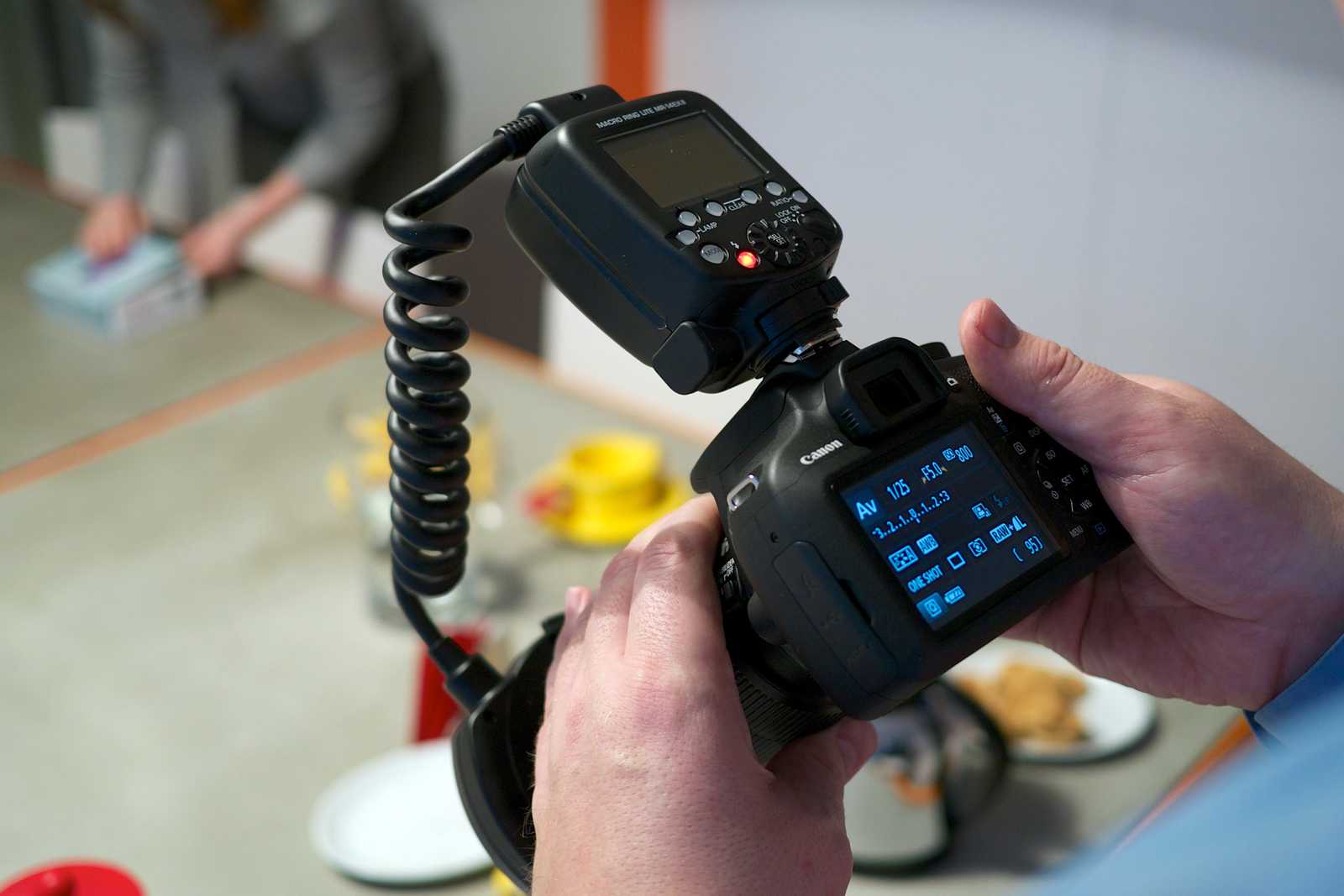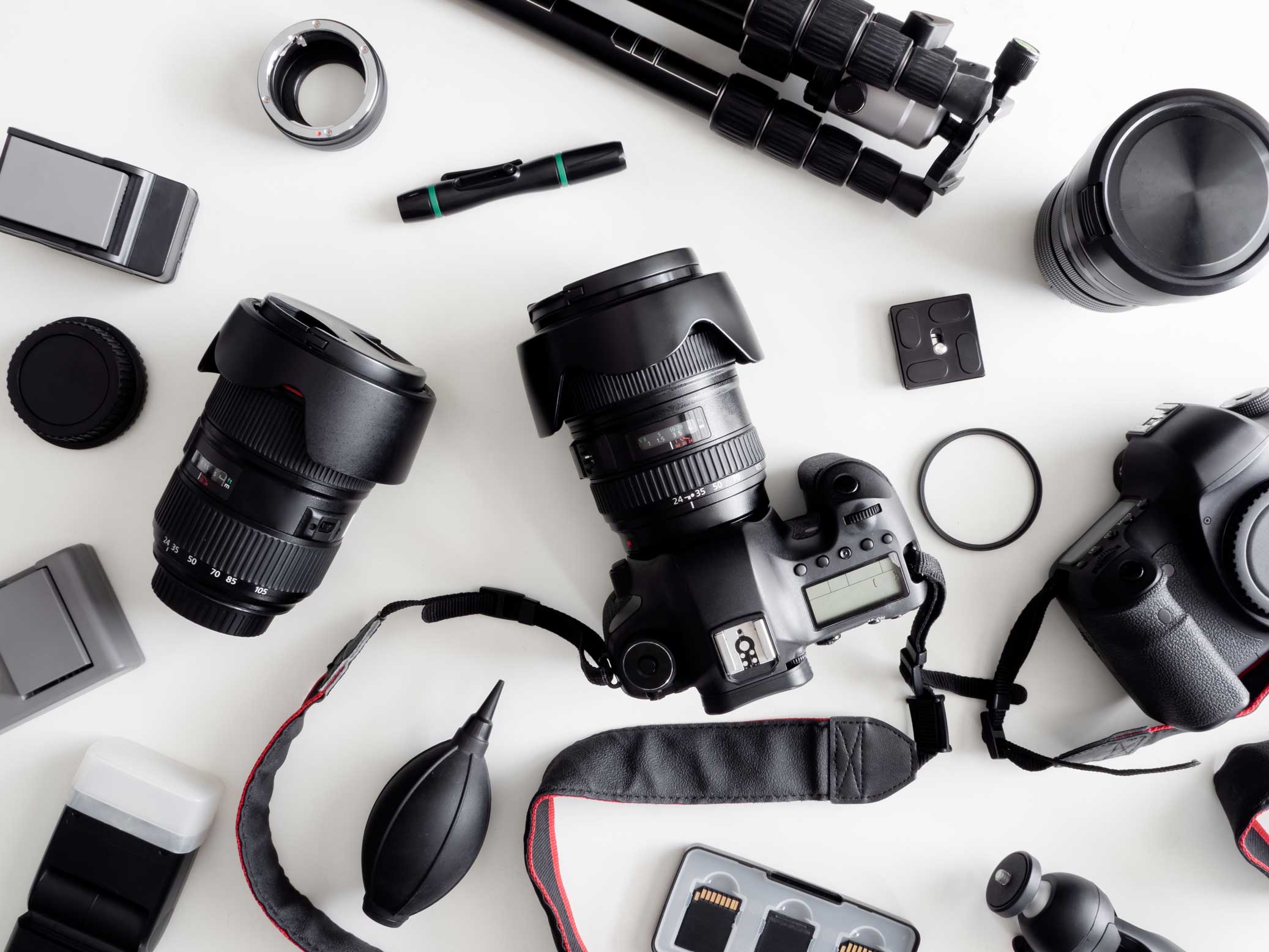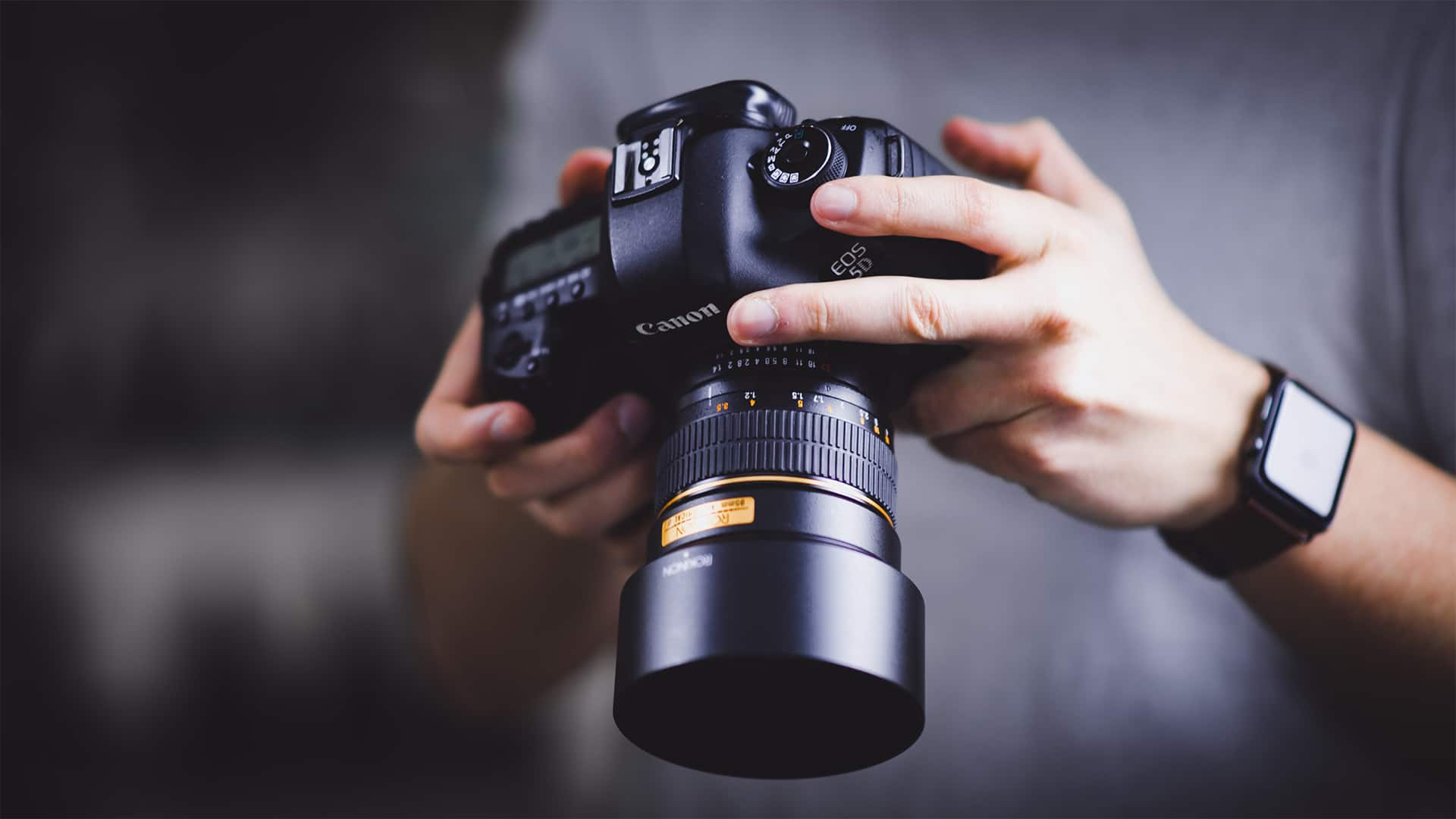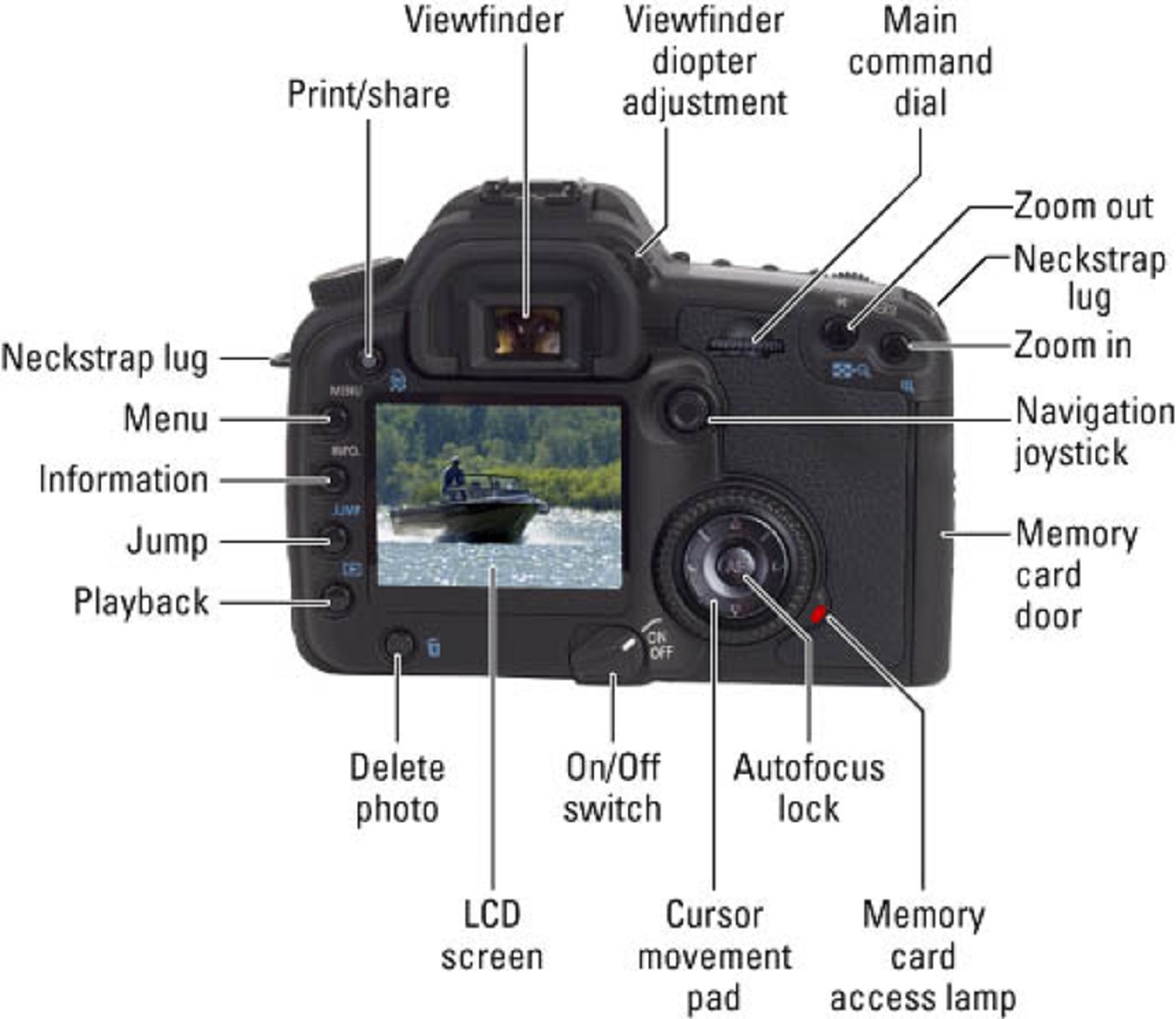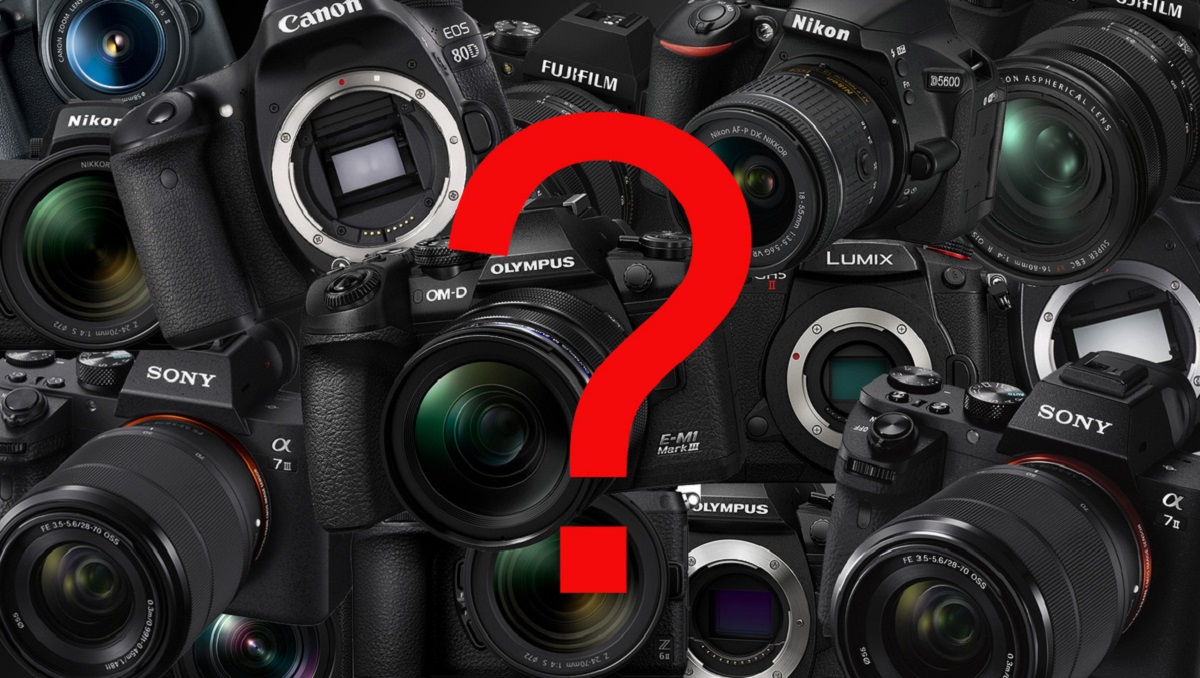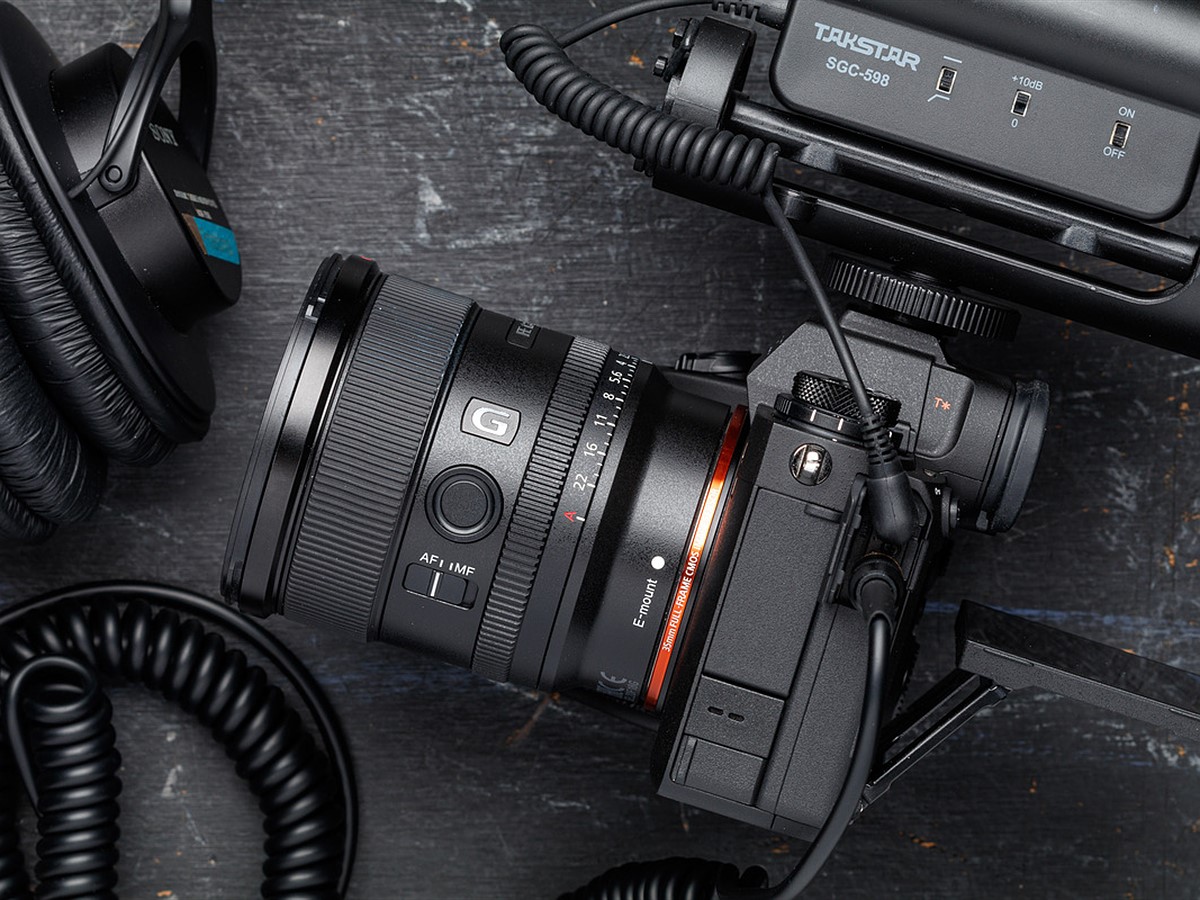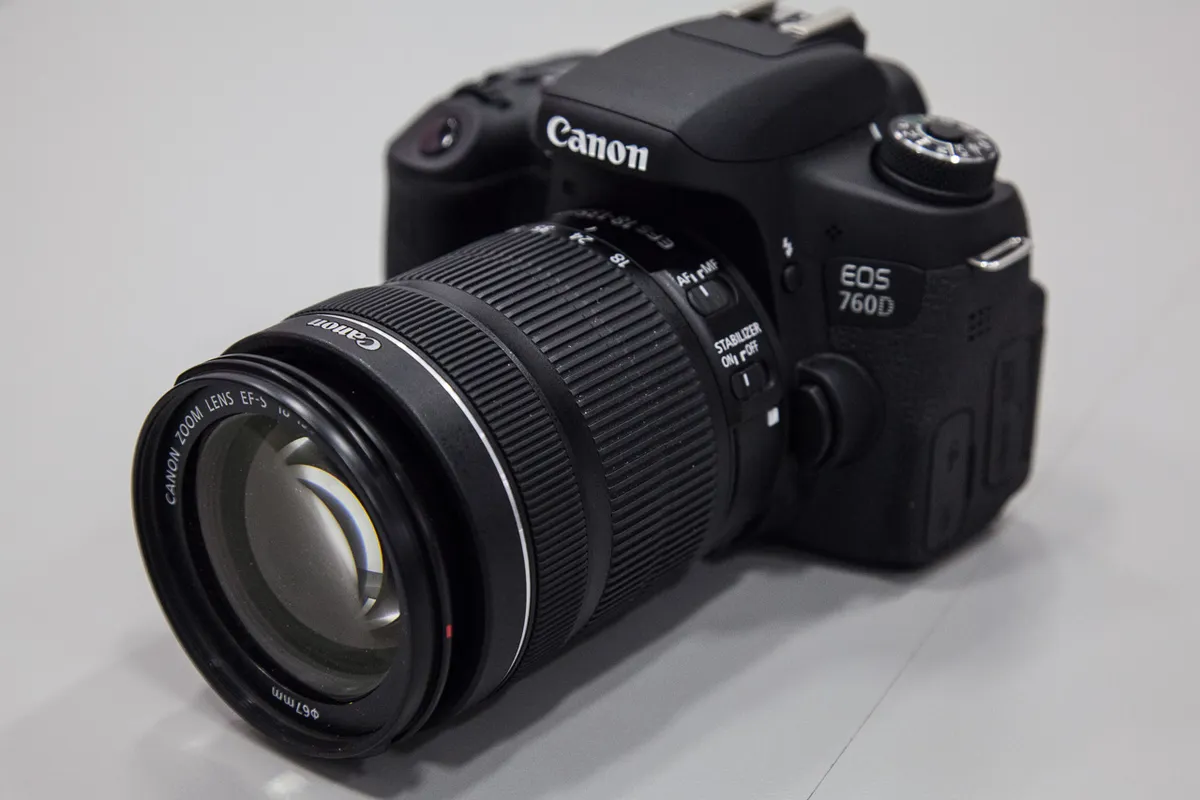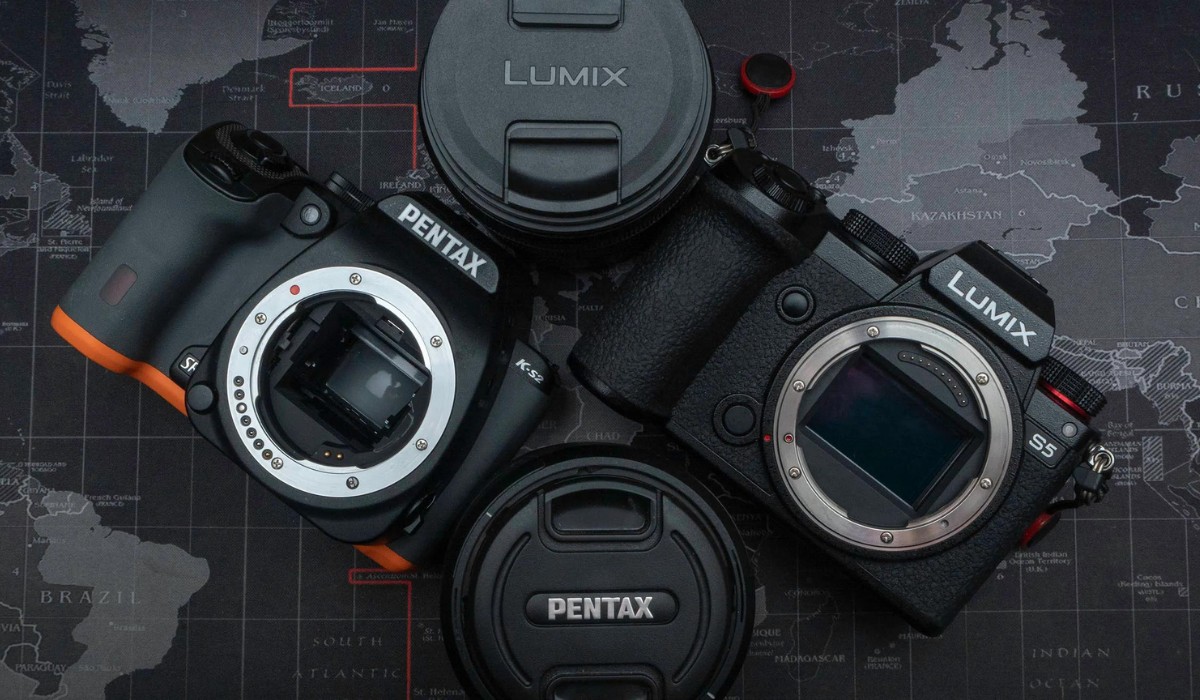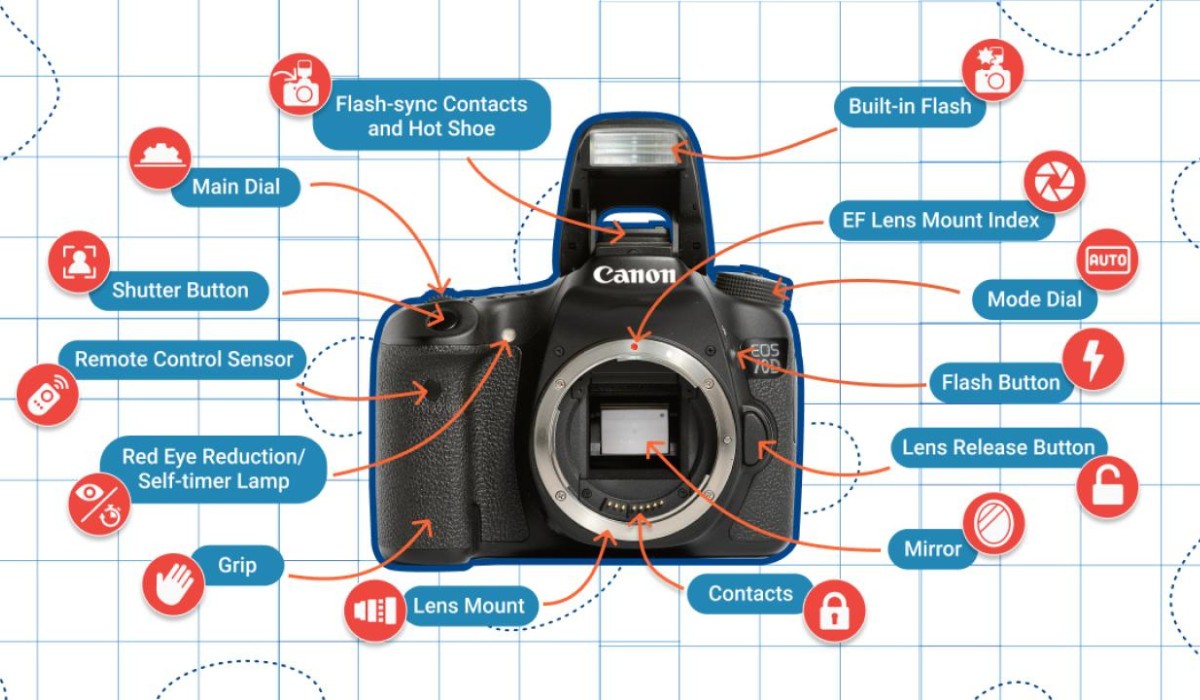Introduction
So, you've got a DSLR camera and you're curious about its history and usage. One important aspect to consider is the shutter count. The shutter count of a DSLR camera indicates the number of times the camera's shutter has been actuated. This metric is akin to the mileage on a car, providing insight into the camera's usage and potential wear and tear.
Understanding the shutter count of your DSLR camera can be crucial when making decisions about purchasing a used camera, estimating the remaining lifespan of your own camera, or determining its resale value. By knowing the shutter count, you can assess the camera's overall condition and gauge whether it's worth investing in maintenance or repairs.
In this article, we'll explore the significance of the shutter count and delve into methods for checking it on your DSLR camera. Whether you're an avid photographer, a prospective buyer, or simply curious about your camera's usage, understanding the shutter count can provide valuable insights into your device's history and condition. Let's dive into the world of shutter counts and equip ourselves with the knowledge to make informed decisions regarding our beloved DSLR cameras.
What is Shutter Count?
The shutter count of a DSLR camera refers to the total number of times the camera’s shutter has been activated since it was manufactured. Every time you take a picture, the shutter mechanism opens and closes, allowing light to hit the camera’s image sensor. This actuation is counted as one shutter actuation. Over time, this count accumulates, providing a tangible measure of the camera’s usage.
Think of the shutter count as the camera’s “mileage,” analogous to the odometer reading on a car. It reflects the level of wear and tear the camera has experienced, offering valuable insight into its overall condition and potential longevity. A high shutter count indicates that the camera has been extensively used, while a low count suggests minimal usage.
Understanding the shutter count is particularly important when evaluating the condition of a used DSLR camera. Just as a high-mileage car may require more maintenance, a high shutter count camera may have a greater likelihood of needing repairs or part replacements. Additionally, a high shutter count can impact the resale value of a camera, as it may indicate that the device is closer to the end of its expected lifespan.
Photography enthusiasts and professionals often monitor their camera’s shutter count to assess its usage patterns, estimate its remaining lifespan, and make informed decisions about maintenance and upgrades. By comprehending the significance of the shutter count, photographers can better manage their equipment and make sound investment choices when purchasing or selling DSLR cameras.
Why is Shutter Count Important?
The shutter count of a DSLR camera holds significant importance for photographers, camera enthusiasts, and prospective buyers alike. This metric serves as a vital indicator of the camera’s history, usage, and potential wear and tear. Understanding the importance of the shutter count can empower individuals to make informed decisions regarding their cameras. Here are several reasons why the shutter count is crucial:
- Assessing Camera Usage: By knowing the shutter count, photographers can gauge how intensively the camera has been used. A high shutter count suggests that the camera has been heavily utilized, potentially influencing its performance and longevity.
- Evaluating Condition: The shutter count provides insight into the overall condition of the camera. Higher counts may indicate a greater likelihood of wear and potential mechanical issues, prompting the need for maintenance or repairs.
- Estimating Remaining Lifespan: Monitoring the shutter count allows photographers to estimate the remaining lifespan of their cameras. This information can aid in planning for future equipment upgrades or anticipating maintenance requirements.
- Assessing Resale Value: When selling a DSLR camera, the shutter count can significantly impact its resale value. Prospective buyers often consider the shutter count as a key factor in determining the camera’s usage history and potential longevity.
- Guiding Purchase Decisions: For individuals considering the purchase of a used DSLR camera, understanding the shutter count is essential. A low shutter count may indicate minimal usage and a well-maintained camera, while a high count may raise concerns about potential future maintenance needs.
Ultimately, the shutter count serves as a valuable tool for assessing the condition and usage history of a DSLR camera. By recognizing the importance of this metric, photographers and buyers can make informed decisions, effectively manage their equipment, and ensure that their investments align with their expectations and requirements.
How to Check Shutter Count on a DSLR Camera
Checking the shutter count on a DSLR camera is a straightforward process that can provide valuable insights into the camera’s usage history. There are several methods available to determine the shutter count, each offering varying levels of convenience and accessibility. Whether you prefer using the camera’s menu, online tools, or software on your computer, you can easily obtain the shutter count information to make informed decisions about your camera. Let’s explore these methods in detail:
- Method 1: Using the Camera’s Menu: Some DSLR cameras include a built-in feature that allows users to view the shutter count directly from the camera’s menu. While the availability of this feature varies across camera models, consulting the camera’s user manual or online resources can guide you through the process of accessing the shutter count information through the menu system.
- Method 2: Using Online Shutter Count Tools: Numerous websites offer online tools specifically designed to retrieve the shutter count of DSLR cameras. These tools typically require users to upload a sample image taken with the camera, after which the website analyzes the image’s metadata to extract the shutter count information. This method is convenient for users who prefer an online, browser-based approach to accessing their camera’s shutter count.
- Method 3: Using Software on Your Computer: For those who prefer a more comprehensive approach, various software applications are available for extracting detailed information from DSLR camera files, including the shutter count. These applications typically require users to connect their cameras to a computer and utilize the software to retrieve the desired data. This method offers in-depth insights into the camera’s metadata and is suitable for users comfortable with computer-based tools.
By employing these methods, DSLR camera owners and prospective buyers can easily ascertain the shutter count, enabling them to make informed decisions about their equipment. Whether you prefer a direct in-camera approach, an online tool, or software-based analysis, the ability to access the shutter count empowers individuals to better understand their cameras and manage them effectively.
Method 1: Using the Camera’s Menu
Some DSLR cameras are equipped with a feature that allows users to access the shutter count information directly from the camera’s menu system. While the availability of this feature varies across camera models, those with this functionality can conveniently retrieve the shutter count without the need for additional tools or software. Here’s a general outline of the steps to check the shutter count using the camera’s menu:
- Consult the User Manual: Begin by referring to the camera’s user manual to determine if the model offers a built-in option to access the shutter count. The manual will typically provide specific instructions for navigating the camera’s menu system to locate the shutter count information.
- Access the Menu: Turn on the camera and navigate to the menu system using the designated controls and buttons. Look for a section related to the camera’s information, settings, or diagnostics, where the shutter count may be displayed.
- Locate the Shutter Count: Within the menu system, search for an option that provides access to the shutter count. Depending on the camera model, the shutter count may be labeled as “actuations,” “shutter releases,” or a similar term. Select the relevant option to view the shutter count information.
- Record the Shutter Count: Once you have located the shutter count within the camera’s menu, take note of the displayed value. This number represents the total number of shutter actuations the camera has undergone since its manufacture.
It’s important to note that not all DSLR cameras offer the ability to access the shutter count directly from the menu system. Therefore, if this method is not available for your specific camera model, you may consider alternative approaches, such as utilizing online tools or software-based solutions to retrieve the shutter count information.
By leveraging the camera’s menu system to check the shutter count, users can conveniently obtain valuable insights into their camera’s usage history and make informed decisions about maintenance, upgrades, or potential resale. This direct in-camera method offers a user-friendly approach for accessing essential information without the need for external resources.
Method 2: Using Online Shutter Count Tools
For DSLR camera owners seeking a convenient and accessible method to check the shutter count, online shutter count tools offer a user-friendly solution. These web-based tools are designed to extract shutter count information from sample images captured with the camera, providing a straightforward means of obtaining this essential data. Here’s a step-by-step guide to using online shutter count tools:
- Image Capture: Begin by capturing a sample image with your DSLR camera. Ensure that the image is captured using the specific camera body for which you intend to retrieve the shutter count.
- Image Upload: Visit a reputable website that offers an online shutter count tool. Look for the option to upload the sample image you captured. Follow the website’s instructions to upload the image file from your computer or device.
- Analysis Process: Once the image is uploaded, the online tool will initiate an analysis of the image’s metadata to extract the shutter count information. This process may take a few moments, depending on the tool’s capabilities and server performance.
- Retrieve Shutter Count: After the analysis is complete, the online tool will display the extracted shutter count information associated with the uploaded image. Take note of the shutter count value provided by the tool, as this represents the total number of shutter actuations recorded by the camera.
It’s important to use reputable and trustworthy online shutter count tools to ensure the accuracy and reliability of the extracted shutter count information. Additionally, be cautious when sharing image files on third-party websites, and consider using tools provided by established and reputable sources within the photography community.
By utilizing online shutter count tools, DSLR camera owners can conveniently retrieve the shutter count information without the need for specialized software or complex procedures. This method offers accessibility and ease of use, making it a practical choice for individuals seeking to gain insights into their camera’s usage history and condition.
Method 3: Using Software on Your Computer
For those who prefer a comprehensive and detailed approach to accessing the shutter count of their DSLR cameras, utilizing specialized software on a computer provides an effective method for retrieving this essential information. By leveraging software applications designed for analyzing camera metadata, users can extract in-depth details, including the shutter count, to gain valuable insights into their equipment. Here’s a guide to using software on your computer to check the shutter count:
- Software Selection: Research and identify reputable software applications specifically designed for extracting camera metadata, including shutter count information. Choose a software solution that is compatible with your camera model and offers the features and functionality you require.
- Camera Connection: Connect your DSLR camera to your computer using the appropriate USB cable or interface. Ensure that the camera is powered on and in the appropriate mode for data transfer, as specified by the software and camera manufacturer.
- Metadata Extraction: Launch the selected software on your computer and initiate the process for extracting metadata from the connected DSLR camera. Follow the software’s instructions to access and retrieve the camera’s metadata, which includes the shutter count among other pertinent details.
- Retrieve Shutter Count: Once the metadata extraction process is complete, the software will present a comprehensive summary of the camera’s details, including the shutter count. Take note of the extracted shutter count value, as this represents the total number of shutter actuations recorded by the camera since its manufacture.
It’s important to use reputable and trusted software applications to ensure the accuracy and reliability of the extracted shutter count information. Additionally, be mindful of any specific system requirements or compatibility considerations associated with the software and your computer’s operating system.
By utilizing software on your computer to check the shutter count, DSLR camera owners can access detailed metadata and gain comprehensive insights into their camera’s usage history. This method offers a thorough and in-depth approach for individuals seeking to manage their equipment effectively and make informed decisions based on accurate shutter count information.
Conclusion
Understanding the shutter count of a DSLR camera is essential for photographers and enthusiasts who seek to gain insights into their equipment’s usage history and condition. By comprehending the significance of the shutter count and employing the available methods to check it, individuals can make informed decisions regarding maintenance, upgrades, and potential resale of their cameras.
Whether utilizing the camera’s menu, online shutter count tools, or specialized software on a computer, the ability to access the shutter count empowers users to manage their equipment effectively. Checking the shutter count provides valuable information for assessing the camera’s usage patterns, estimating its remaining lifespan, and evaluating its overall condition.
For those utilizing the camera’s menu, the convenience of accessing the shutter count directly from the camera itself offers a user-friendly approach without the need for additional tools or software. Online shutter count tools provide accessibility and ease of use, allowing users to retrieve the shutter count information by uploading sample images captured with their cameras. Additionally, utilizing specialized software on a computer offers a comprehensive method for extracting detailed metadata, including the shutter count, to gain in-depth insights into the camera’s history and usage.
By embracing the knowledge and methods outlined in this article, DSLR camera owners and prospective buyers can navigate the world of shutter counts with confidence. Whether monitoring the usage of their beloved cameras, evaluating potential purchases, or planning for equipment maintenance, the ability to check the shutter count equips individuals with the information needed to make informed decisions and ensure the longevity and performance of their valuable photography gear.







